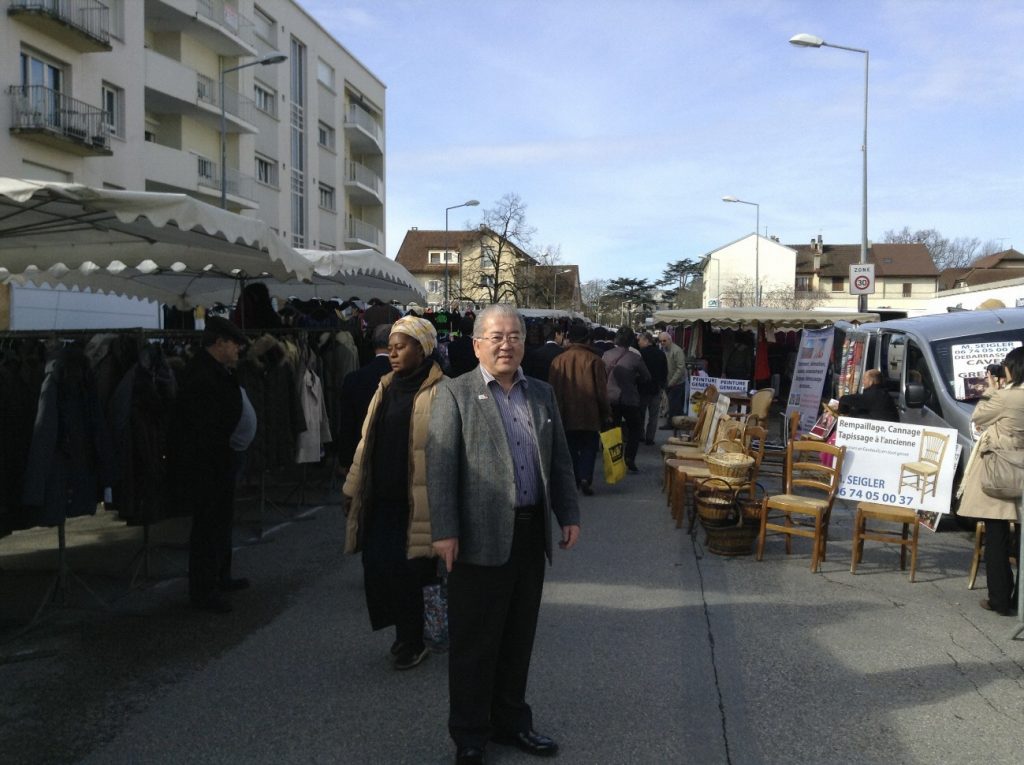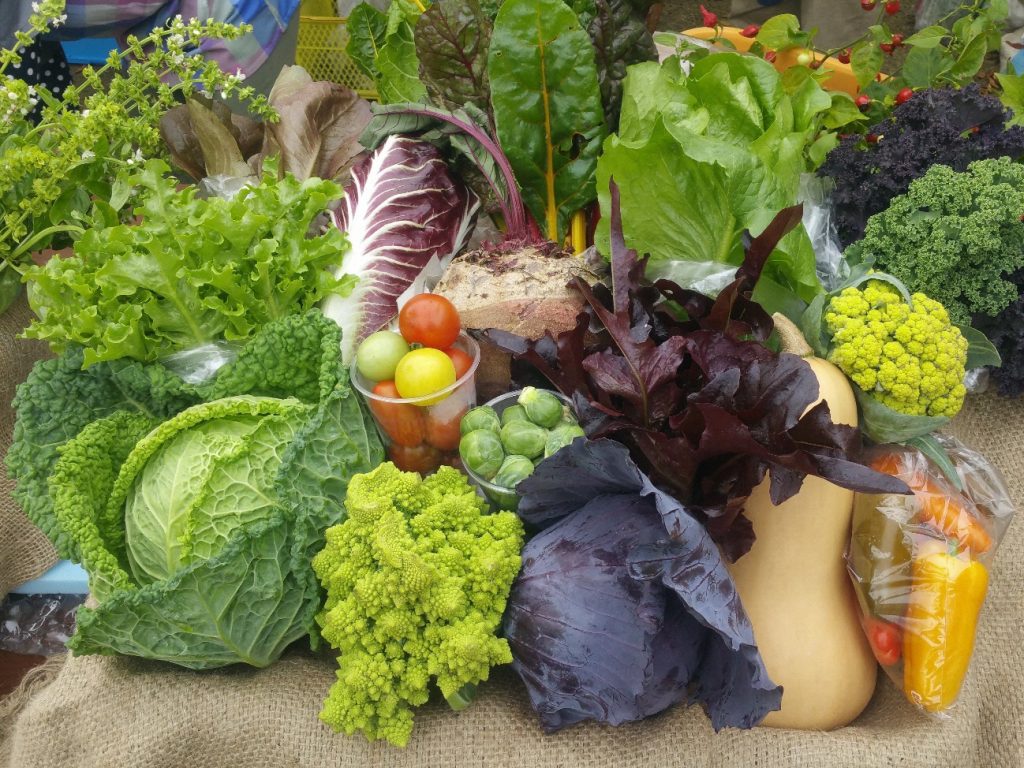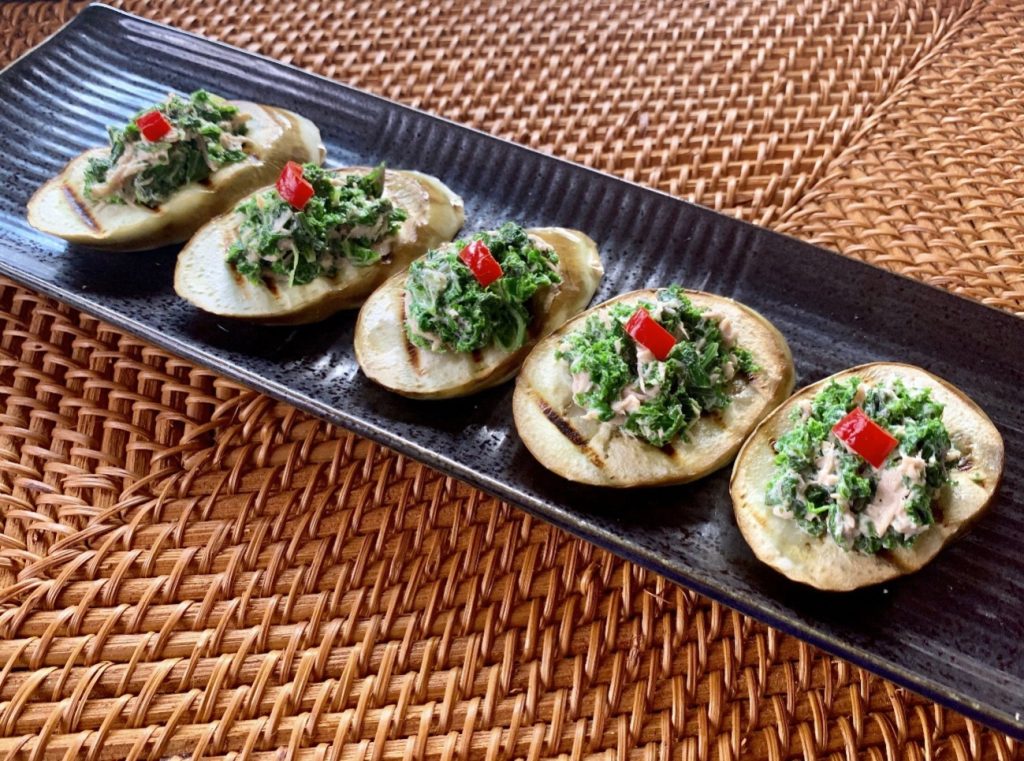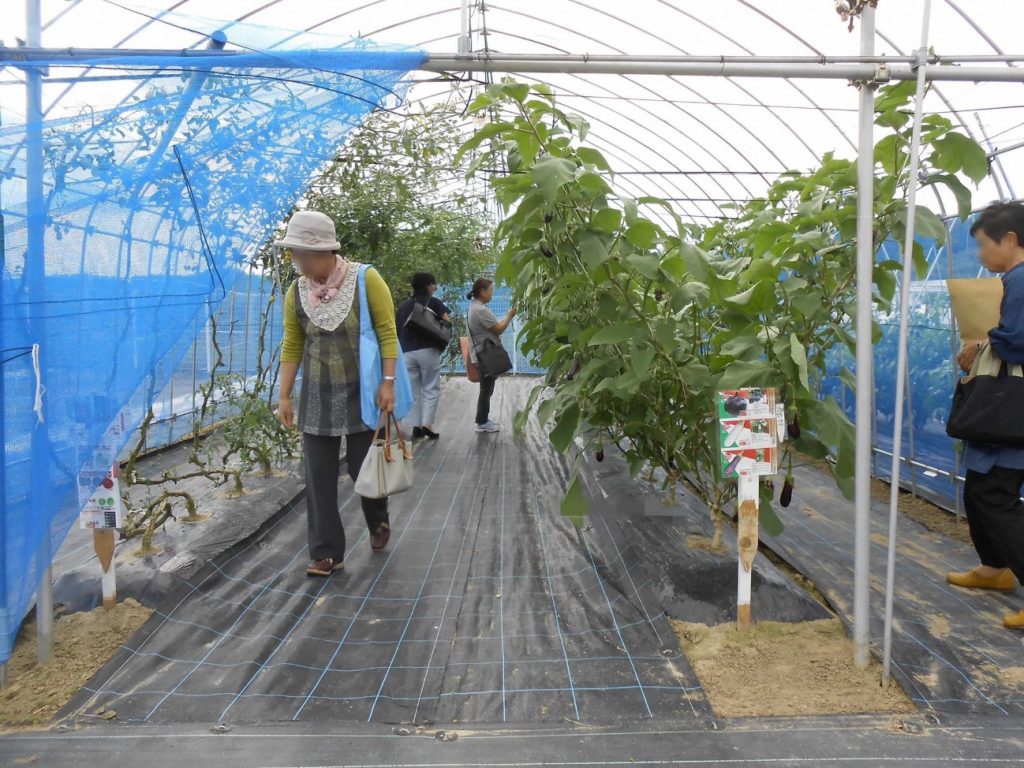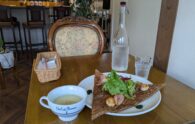In 2013, the mayor of Ichinoseki City wandered the markets of Ferney-Voltaire, in Eastern France, and came across a variety of vegetables that he had never seen before; with the artichoke leaving the biggest impression. He asked how it’s eaten and was told that the ‘petals’ can be munched on, much like a snack. This exposure to a new culinary culture and the assumption that demand would increase if the construction of the ILC went ahead, were reasons why Ichinoseki began the ‘Seiyo Yasai project’ or ‘Western Vegetable project’ in 2017. ‘Seiyo Yasai’ is used as a term to refer to vegetables introduced to Japan from Europe and the United States in relatively recent years. Some examples include artichoke, Brussel sprouts, beets, chicory, mints, parsley and leeks. ‘Western vegetables’ commonly found in Japan, such as tomatoes, cabbage and potatoes, are not included in this category.
The Ichinoseki City Southern Agricultural Technology Development Center along with the city’s 4-H club which comprises of a group of young farmers, are at the forefront of the project which aims to increase production of Seiyo Yasai. The Ichinoseki City Southern Agricultural Technology Development Center has tried their hand at growing 60 types which include artichoke, beets, fennel, Brussel sprouts, herbs such as rosemary, a range of leafy greens such as kale and Swiss chard, different shaped and colored eggplants, cauliflower, broccoli and peppers. Several 4-H farmers are also cultivating various types and selling them to restaurants.
By introducing these vegetables at farming festivals and having local restaurants use them in their cooking, Ichinoseki’s citizens are getting to know of the unique produce. In December 2019, Yoichi Harada, the head chef of Asahiya restaurant in Ichinoseki, held a tasting using a variety of Seiyo Yasai grown in Ichinoseki. Here, he showcased 18 kinds of dishes such as mousse, winter vegetable pot and pickled vegetables and gratin which had shallots as a secret addition to his sauce.
Shallots and leeks are among the top choices for increased scale of production. Shallot seedlings are currently being prepared for distribution to 4-H members. The Southern Agricultural Technology Development Center will host a viewing of their farm to show where the vegetables are grown, what the vegetables are and demonstrate how the vegetables can be cooked.
In this way, Ichinoseki City is making preparations to welcome the ILC, in terms of food as well!
Japanese
ILCを迎える野菜プロジェクト【写真】
2013年、一関市長がフランスのフェルネー・ヴォルテールの朝市を視察した際、見たことのない野菜がたくさんありました。最も印象に残ったのはアーティチョークでした。アーティチョークをどのように食べるのかを尋ねると、花びらをスナックのように食べるとのことでした。
新しい食文化に興味を持ち、ILCが実現すれば重要度が増すことから、一関市は2017年に「西洋野菜プロジェクト」を始めました。「西洋野菜」は、比較的最近、欧米から伝わった野菜を表す言葉です。アーティチョーク、芽キャベツ、チコリー、ビーツ、ミント、パセリ、リーキなどが含まれます。トマト、キャベツ、ジャガイモなど、日本でよく見られる「西洋野菜」はこのカテゴリに含まれていません。
【写真】
同市南部農業技術開発センターと4Hクラブ(農業青年クラブ)は、西洋野菜プロジェクトの先頭に立ってプロジェクトをリードしています。南部農業技術開発センターは、アーティチョーク、ビーツ、フェンネル、芽キャベツ、ローズマリーなどのハーブ、ケールやスイスチャードなどの葉菜、普段見ない形や色のナス、カリフラワー、ブロッコリやピーマンを含む60種類の栽培に挑戦しています。4Hクラブ会員の中には、西洋野菜を栽培し、レストランに販売している方もいます。
【写真】
農業祭で野菜を紹介する、又は地元のレストランで料理に使用することで、市民が珍しい野菜に親しむことができます。 2019年12月、一関市千厩町にあるレストランあさひやで、一関で栽培しているさまざまな西洋野菜を使った試食会が開催されました。ここでは、ムース、冬野菜の鍋、野菜の漬物、隠し味のシャロットを加えたグラタンなどの18種類の料理を紹介しました。
【写真】
特に、シャロットとリーキは、増産される可能性が高いです。シャロットの苗は、4Hクラブ会員に試験栽培してもらうため、準備が進められています。南部農業技術開発センターでは野菜をどのように栽培するか、どのように調理するかを紹介する「参観デー」の開催を計画しています。
このように市では、食の面からもILCの実現を見据えながら受け入れ準備を進めます。

